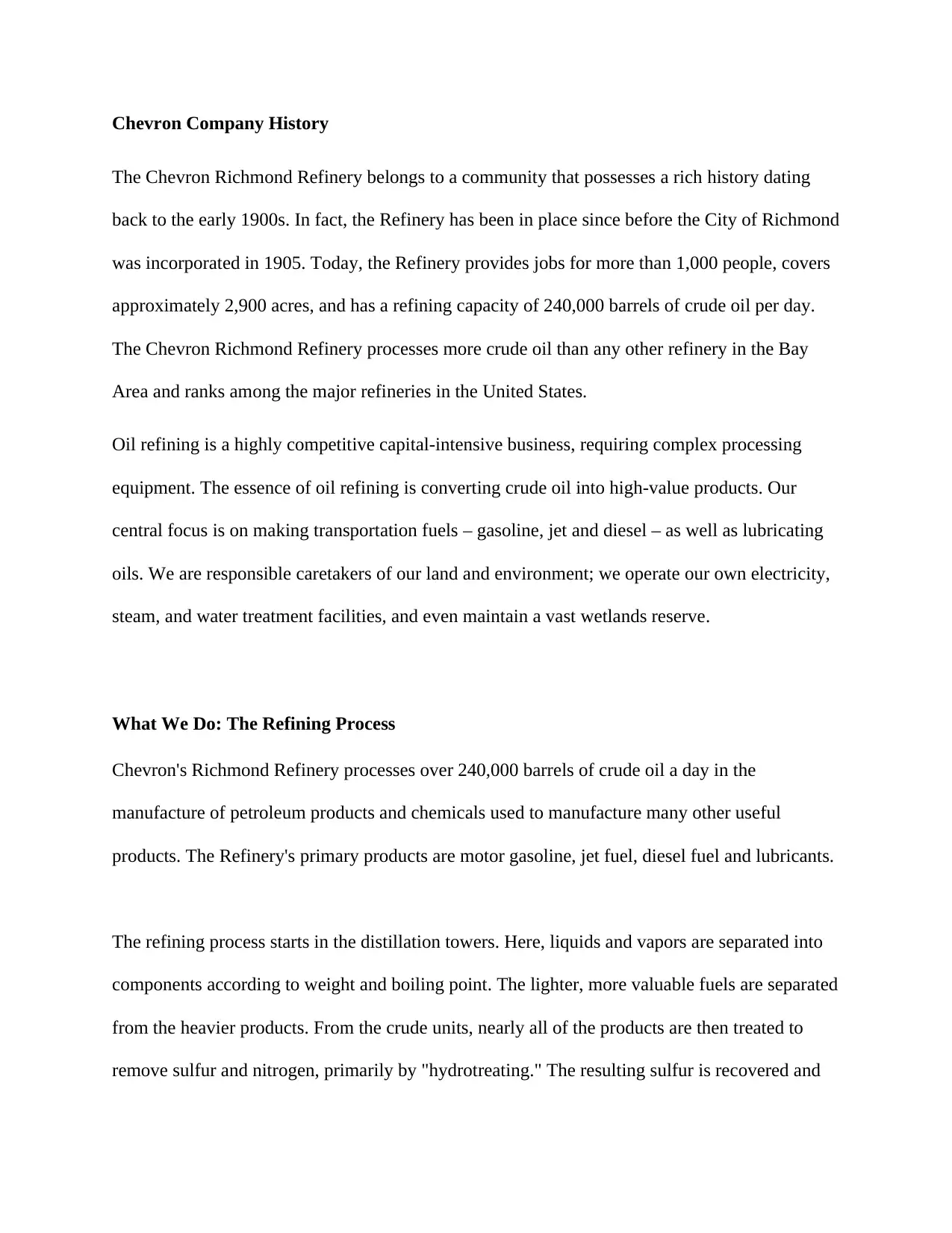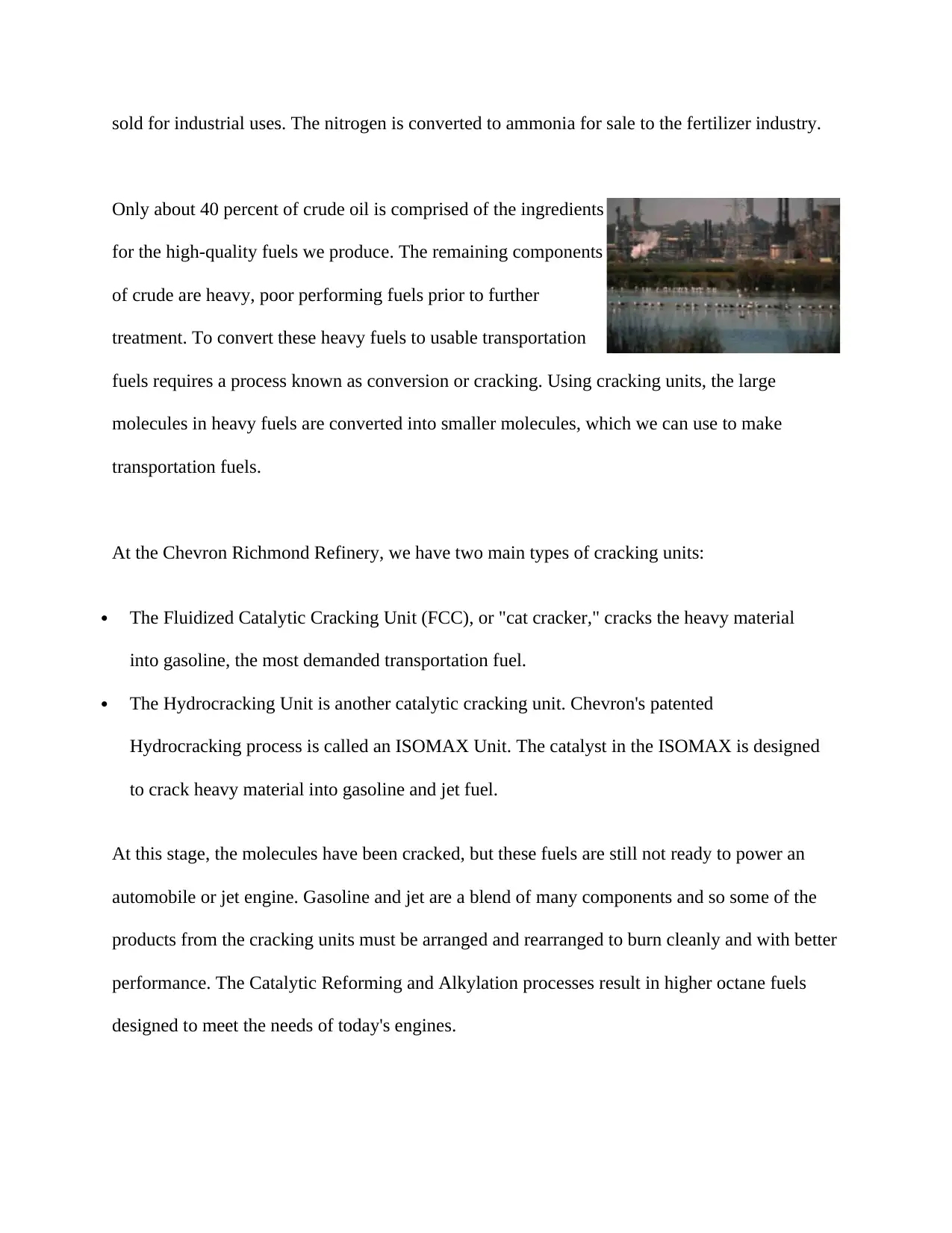Chevron Richmond Refinery Operations
VerifiedAdded on 2019/09/22
|4
|618
|207
Portfolio
AI Summary
The Chevron Richmond Refinery is a major oil refining facility that processes over 240,000 barrels of crude oil per day, producing motor gasoline, jet fuel, diesel fuel, and lubricants. The refinery's process involves distillation, hydrotreating, conversion/cracking, and catalytic reforming to convert crude oil into high-value products, with a focus on making transportation fuels and operating in an environmentally responsible manner.
Contribute Materials
Your contribution can guide someone’s learning journey. Share your
documents today.
1 out of 4
![[object Object]](/_next/static/media/star-bottom.7253800d.svg)









